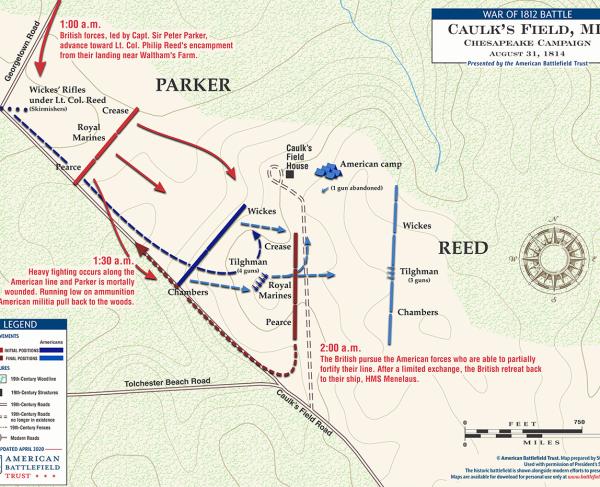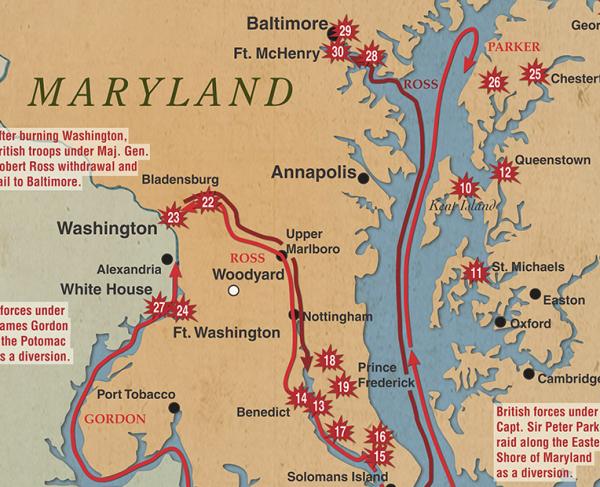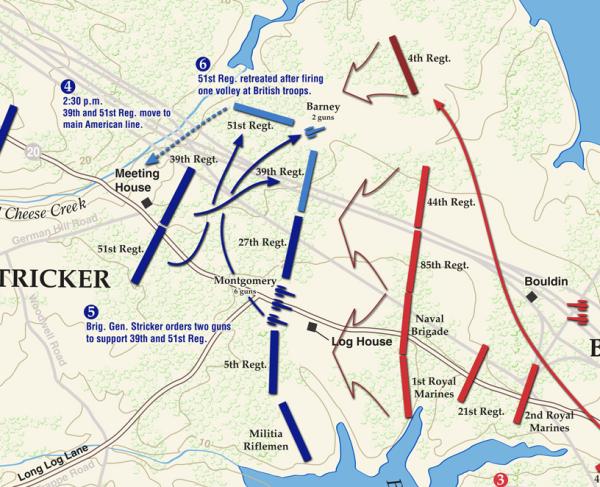Pensacola November 7-9 1814
The Revolutionary War Trust's (f0rmerly Campaign 1776) map of the Battle of Pensacola
1-August 14, 1814: British marines (100) under Major Edward Nicolls arrives after Spanish invitation. They proceed to militarize Pensacola and recruit approximately 100 slaves who are freed and armed. About 500 Creek Indians begin to arrive and settle east of downtown Pensacola.
2-November 2, 1814: Upon hearing word of British presence in Pensacola and continued Spanish inducements for American scalps, Andrew Jackson writes Washington justifying his decision to attack Pensacola. He departs his army (4100) from Ft. Mims, AL, traveling south.
3-November 6, 1814: Jackson camps on the same site where Bernardo de Galvez had camped in 1781. He offers peace terms to British and Spanish, but his envoy is fired upon. In the evening, British forces evacuate to their ships in the harbor. The ships are repositioned west of Pensacola, closer toward Jackson's camp.
4-November 7, 1814: Jackson leaves 500 mounted men in camp to keep the fires lit and marches the remainder of his army before dawn, north, around the major Spanish defense, Ft. San Miguel. He forms his troops on the east end of modern-day Seville Square.
5-November 7, 1814: As light broke, Jackson orders the attack and the objective, a Spanish blockhouse near the corner of modern-dar Palafox and Government Sts. The 3600 Americans overrun the detachment of 20 some-odd Spaniards almost effortlessly. The Spanish governor pleads for peace and reveal that the British are planning on attacking New Orleans—vital intelligence for Jackson. American cannons briefly challenge the British ships who are too far away to offer opposition. Jackson orders Major Piere to lead the assault against Ft. San Miguel. He positions American cannons in the old Spanish redoubt, Ft. San Bernardo. The Americans rename it Ft. Bernard. The Spanish (275) surrender shortly before the attack.
6-November 8, 1814: Jackson, who is back in camp, orders a detachment to demand the surrender of the Spanish at Battery San Antonio and Ft. San Carlos, which are located near where Ft. Barrancas is today. San Carlos is destroyed by British troops, who had arrested the Spanish garrison as the British had departed Pensacola.
7-November 9, 1814: Jackson departs to Mobile and then onto New Orleans.
Learn More: The Battle of Pensacola



